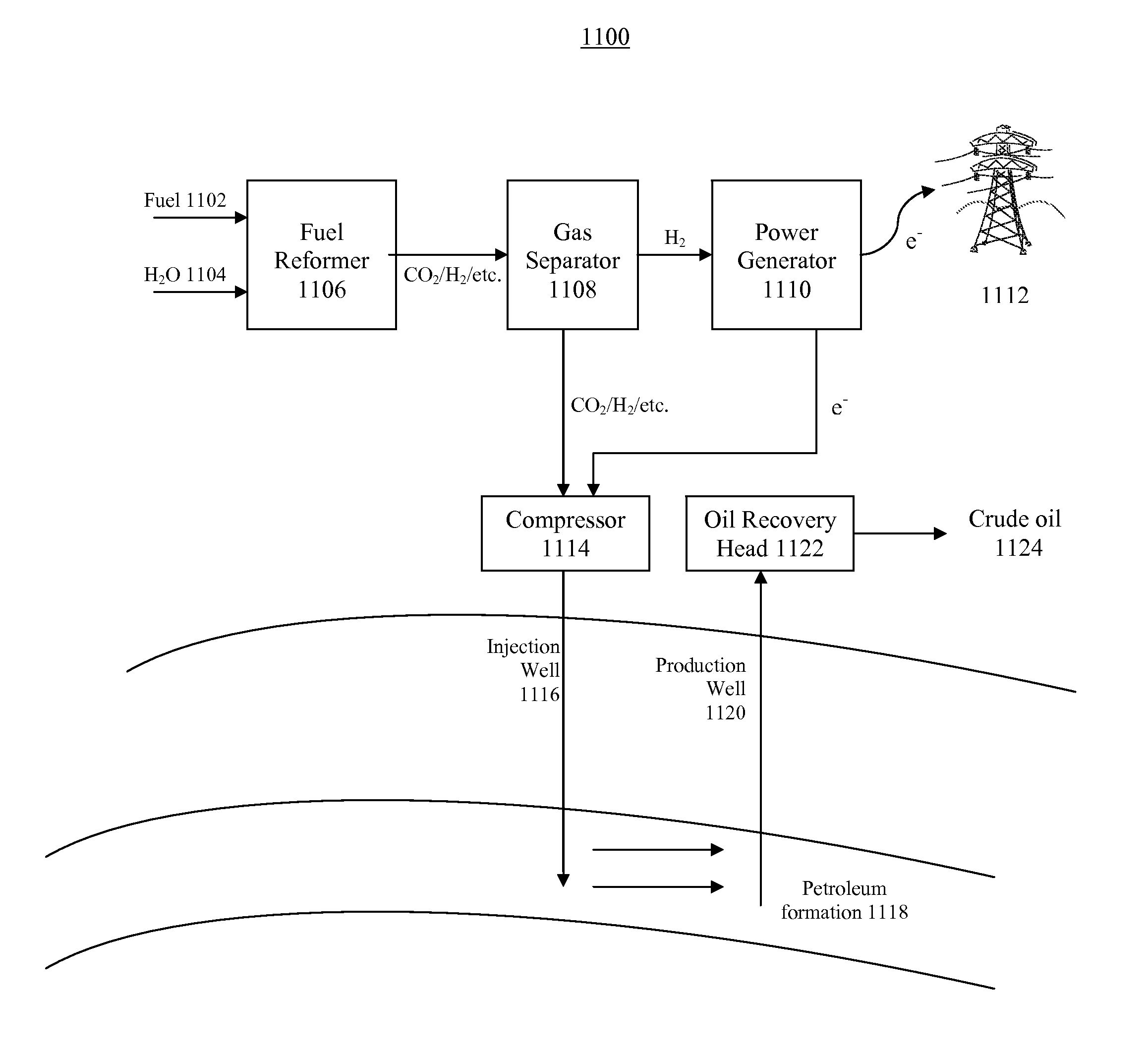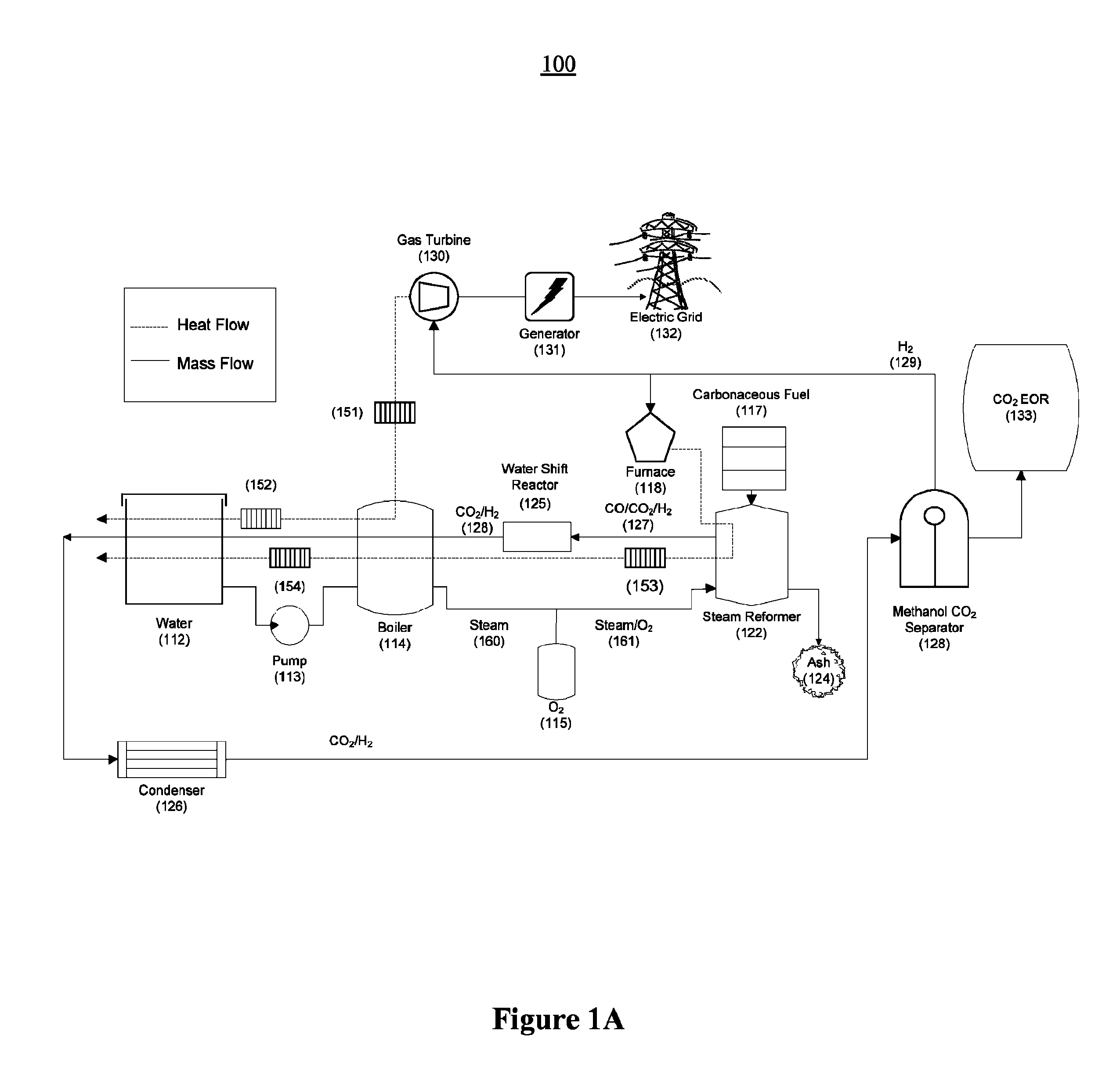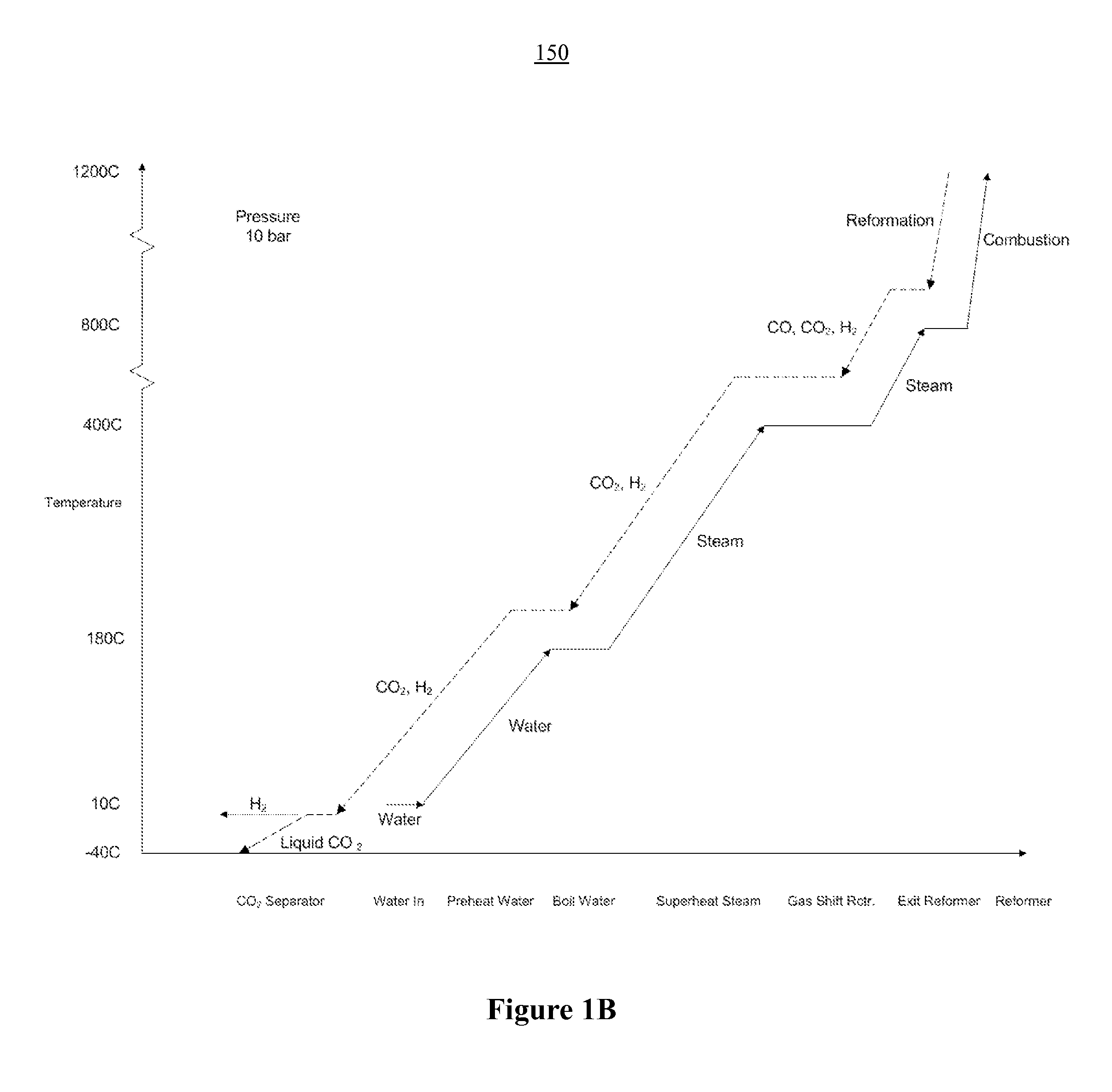Systems and methods for generating in-situ carbon dioxide driver gas for use in enhanced oil recovery
a technology of driver gas and carbon dioxide, which is applied in the field of system and method for generating in-situ co2, can solve the problems of difficult and costly construction of cosub>2 /sub>pipelines, hampered use of cosub>2 /sub>pipelines, and inability to construct cosub>2 /sub>pipelines, etc., to achieve enhanced oil recovery, enhance oil recovery, and enhance oil recovery
- Summary
- Abstract
- Description
- Claims
- Application Information
AI Technical Summary
Benefits of technology
Problems solved by technology
Method used
Image
Examples
embodiment 600
[0124]In an alternative embodiment 600, depicted in FIG. 6, a fluidized-bed reformer 601 is used to generate high pressure gas. In the fluidized-bed reformer 601, most particles remain in the reaction chamber, but finer particles are entrained with the exhaust gas. That is, compared to the fixed-bed reformer 501 of FIG. 5, greater amounts of fine particles are entrained in the higher velocity exhaust gas (relative to the exhaust gas generated in the fixed-bed reformer) and must be removed prior to compression of the driver gas. The coarsest of the entrained particles are removed from the gas stream and can be recycled to the reformer or discharged as residue. The remaining finest particles are removed by filtration.
[0125]FIG. 6 illustrates an example of an embodiment of a system utilizing the fluidized-bed reformer 601. Delivered carbonaceous fuel 602 with a feed particle size of approximately less than ¼-inch is introduced into hopper 603. The carbonaceous fuel is fed into fluidize...
embodiment 1100
[0175]FIG. 11 illustrates another example of an embodiment 1100 of the present invention for extracting oil from an oil site and for generating electricity. This example is illustrative only, and is not intended to limit the scope of the present invention. Fuel 1102 and water 1104 are fed into reformer module 1106. The fuel and water may also be pre-mixed and fed into reformer 1106 as a single stream. Oxygen, or another oxidizing agent, may be added to reformer 1106 via another line (not shown), or pre-mixed with either the fuel, or water, or both. Generated driver gas, which may include CO2, H2, as well as other gases, is fed into gas separator 1108, which separates a portion of the hydrogen gas from the other driver gases. A portion of the separated hydrogen gas is fed into power generator 1110, which could be a gas turbine, to generate electricity. A portion of the electricity is fed into the electric grid 1112. A portion of the electricity may also be used on-site, to provide po...
PUM
 Login to View More
Login to View More Abstract
Description
Claims
Application Information
 Login to View More
Login to View More - R&D
- Intellectual Property
- Life Sciences
- Materials
- Tech Scout
- Unparalleled Data Quality
- Higher Quality Content
- 60% Fewer Hallucinations
Browse by: Latest US Patents, China's latest patents, Technical Efficacy Thesaurus, Application Domain, Technology Topic, Popular Technical Reports.
© 2025 PatSnap. All rights reserved.Legal|Privacy policy|Modern Slavery Act Transparency Statement|Sitemap|About US| Contact US: help@patsnap.com



